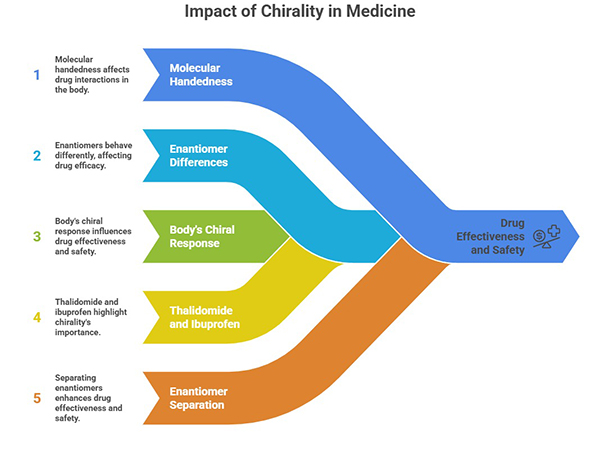

Chirality—often described as the “handedness” of molecules—is a key concept in medicine that can greatly affect how drugs work in the body. Many drugs are made up of two mirror-image forms, called enantiomers, which may look the same but can behave very differently once inside us. Just like your left and right hands fit differently in a glove, these two forms may interact differently with the body's systems.
One form of the drug might be helpful and treat the disease, while the other could be less effective or even cause harmful side effects. This is because our bodies, including proteins, enzymes, and receptors, are also chiral and respond differently to each mirror-image form. For example, drugs like thalidomide and ibuprofen have shown how important it is to understand and control these differences.
Despite this, many medicines are still sold as mixtures of both enantiomers. This can lead to unwanted effects if one form doesn't work well or causes harm. That's why separating and studying each enantiomer is important—not just for making drugs more effective, but also for making them safer. Understanding these aspects shows why chirality plays a vital role in drug performance and patient safety.
"Many medicinal agents important to life are combinations of mirror-image twins. Despite the close resemblance of such twins, the differences in their biological properties can be profound. In other words the component enantiomers of a racemic chiral drug may differ wildly in their pharmacokinetic, pharmacodynamic profile. The tragedy of thalidomide illustrates the potential for extreme consequences"...